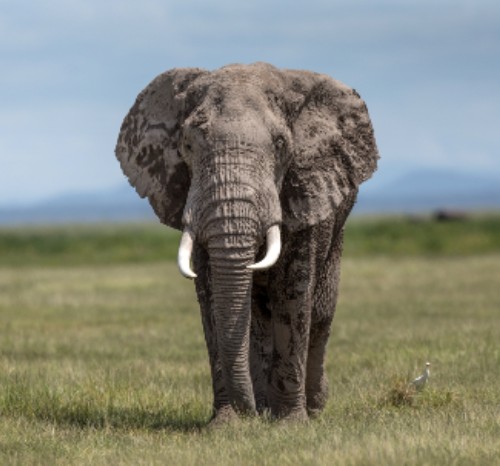New report challenges namibia’s community-based wildlife management model
25 November 2021
NEW REPORT CHALLENGES NAMIBIA’S COMMUNITY-BASED WILDLIFE MANAGEMENT MODEL
A new report, published yesterday in the Journal of African Elephants, provides startling evidence of system failure which calls into question the often-claimed success of Namibia’s system of community-based wildlife management.
The report, co-authored by investigative journalists Adam Cruise and Izzy Sasada, follows a two-month field investigation during which the authors visited several conservancies that are part of Namibia’s Community-Based Natural Resource Management (CBNRM) programme in the arid Kunene Region in the North of the country.
Their research involved interviewing conservancy managers, trophy hunting outfitters and community members, and examining official wildlife records.
Namibia’s CBNRM programme, which relies heavily on the generation of funds from extractive wildlife activities including trophy hunting and wildlife trade, is often promoted by proponents of wildlife exploitation as a successful model for sustainable wildlife management and, importantly, community development.
However, the report tells a very different story about serious declines in wildlife populations, continuing, grinding, community impoverishment, overexploitation of the region’s natural resources through logging and mining, and the oppression, displacement, disenfranchisement, and exploitation of minority ethnic groups by central Government and others.
Commenting on the report, Born Free’s co-founder and Executive President, Will Travers said: “This important report drives a coach and horses through claims that the CBNRM programme in Namibia has brought significant benefits to local people and the wildlife they live alongside.

“The reported state of some communities, afflicted by poverty, and social ills such as alcoholism and prostitution, is simply shocking. On the wildlife front, the report also makes for grim reading. Instead of thriving, the authors’ findings suggest that wildlife populations are in serious decline, including the region’s unique desert-adapted elephants which are clearly on the brink of collapse. Yet the Government continues to pursue a policy of issuing hunting quotas and selling of live elephants to the highest bidders.”
In December 2020, Namibia’s Ministry of Environment, Forestry and Tourism (MEFT) announced its intention to auction 170 live wild elephants from the region, claiming the sale would reduce overpopulation and help tackle human-elephant conflict. In spite of the efforts of Born Free and others to dissuade the Government from this course, in August 2021 MEFT announced that it had received successful bids for 57 elephants, 42 of which would be destined for export. The findings of the report suggest that, far from relieving overpopulation, the capture and sale of these elephants poses a real threat to the species’ future in the region.
Travers continued: “The stories of continuing human impoverishment and ethnic minority oppression, reported by the authors, are truly shocking. It begs the question: whose pockets are being lined by the proceeds from the sale of wildlife and the commercial exploitation of the region’s natural resources? Namibia’s CBNRM system is supposed to be the flagship for successful community-based wildlife management, but it is seemingly wracked by corruption and greed, and is clearly not working for wild animals or local people. It’s time for a serious rethink.”
The authors of the report are calling for a major independent, transparent review of the country’s CBNRM policy, including an assessment of the conservation status of wildlife species in the region.
Image © www.georgelogan.co.uk
